The key to efficiency is found along the shortest path between any two points.
It is remarkably simple to think of an efficient operation as one that runs in a straight line. Getting from point A to point B is rather “straightforward" they say.
In Reliability circles, the path between point A and Point B is the path between the RCM study and the fully prepared CMMS system that has delivered a new work instruction document to the technician.
This has added complexity when you are confronted with so many new technical jargons like maintenance items, schedule suppression, document information records, PRT, task lists, secondary tasks, object lists, job plans, and the like. The hidden purpose of these terms might seem like it is to simply confuse the issue, so set them aside for now, and just focus on getting from point A to point B.
The action of integrating a process for efficient action invokes a myriad of words that include “combination, amalgamation, unification, merging, fusing, meshing and blending”. The use of a consistent tool, like the Implementation Module of Cordant™ Asset Strategy, allows you to navigate this jargon with a simple process and traverse from point A to point B easily.
When we integrate RCM with a leading CMMS like SAP, MAXIMO, or Oracle we are faced with many additional choices. These additional choices arise because the flexibility in modern CMMS systems has evolved to service a broader spectrum of the market. The market has pushed the CMMS designer, to allow for their CMMS to fit a great many organizations easily. This means the CMMS can probably do anything, but in doing so the CMMS can also do several things you probably don’t need.
Knowing which CMMS features you need now is perhaps the most important “current issue” you will have to solve.
Key in this choice is to not install what I call a “Glass Ceiling”. A glass ceiling is an artificial barrier which limits your organization growth because you have configured your CMMS to accidentally stunt future growth. This can be avoided if you know which CMMS features you will need in the next three years before you lock down how your CMMS should operate today.
Today, your goal is still to get from point A to point B. Deliver into the hands of the waiting technician a fully featured professional work instruction when it is required, using the data from your RCM study.
To illustrate the point a little more clearly, let us consider we own a new large piece of equipment.
To ensure the equipment provides many years of trouble-free operation, you will apply the RCM method to generate the “content” needed to prepare your initial maintenance strategy.
We can call this point A.
It is with the application of this initial strategy and some improvement activities, you intend to operate the new asset, following the straightforward, prudent application of maintenance when it is needed, not before or later than needed. This is all considered best practice stuff – well done!
Now – let’s define point B as the Preventative Work Instruction you will print from a CMMS work order and hand to your technician. This document is very important because it will serve as the transfer vehicle for all your hard work. Recall you started with RCM preparing the maintenance strategy and have transitioned to the work instruction content that the technician can execute.
The challenge is, of course, getting the CMMS to print this document, on time, not early, and complete in the format needed by the technician.
This is not as easy as it sounds.
Understanding the underlying RCM Analysis database tables alone is complex. Aligning the RCM tables to the CMMS database tables and generating compliant maintenance master plan data is complex integration work that forces the data into load sheets for each CMMS table. This typically is a format that few understand well.
Factor in the requirement to produce a work instruction document using the RCM outputs and a standard template that looks like a professional work Instruction document, will generally involve a lot of work.
Faced with such a large amount of work, we all want an “easy” way out. What you need is a simple to use, consistently formatted set of tools that help you get from point A to point B. It is important to know that such a set of tools exist and they are easy to use. Implementation module of Cordant™ Asset Strategy is the leading example of one of the tools currently available.
The tools do exist – and working with ARMS Reliability we can help you travel from point A to point B easily. We can help you do this without wasted steps and produce professional work instruction documents as well as load SAP, MAXIMO, Oracle and most every other CMMS known to man.


